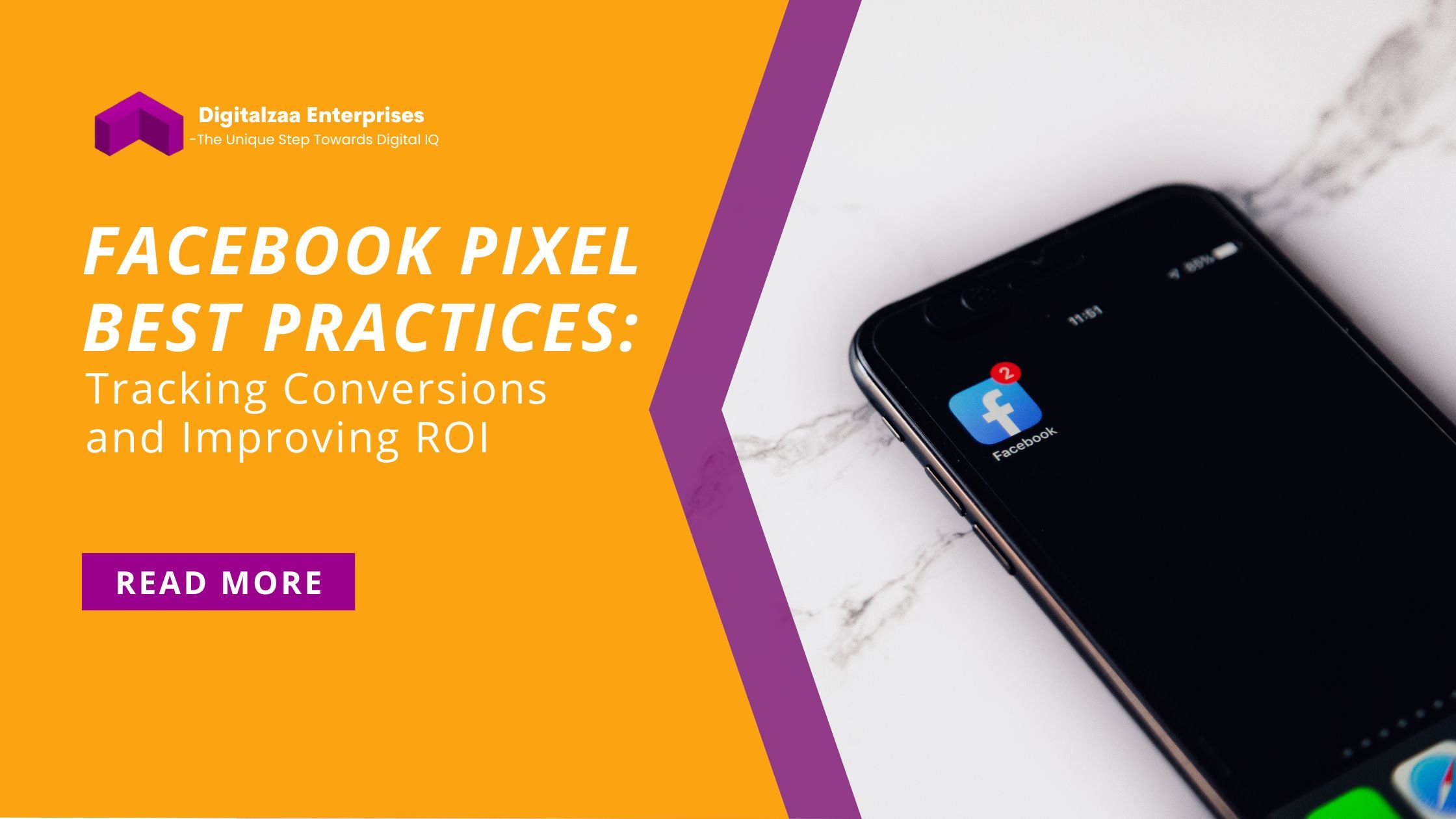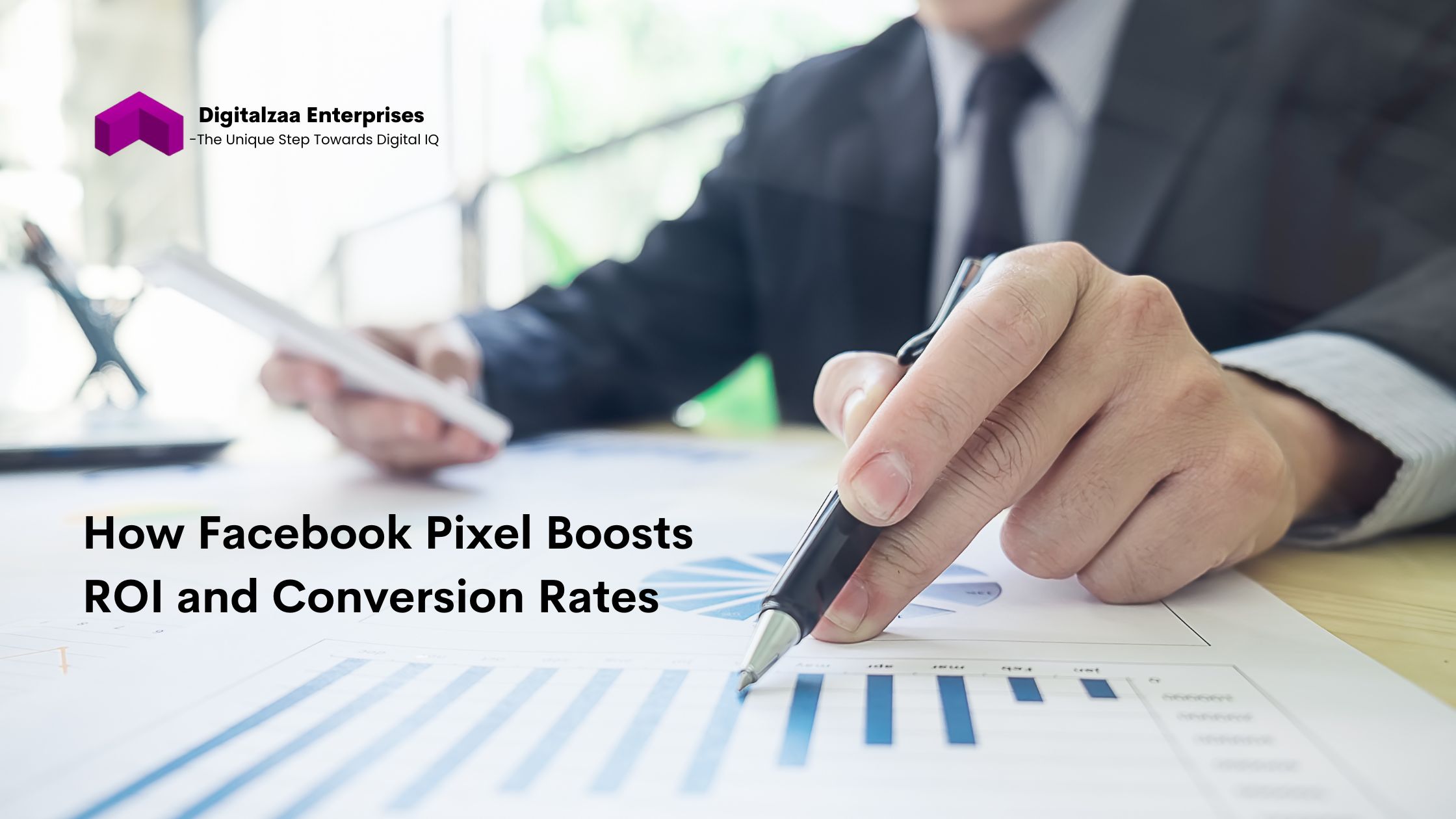Facebook Pixel Best Practices: Tracking Conversions and Improving ROI

In today’s competitive digital marketing landscape, data is the key to success. Businesses that leverage precise tracking and analytics gain a significant advantage over their competitors. One of the most powerful tools for tracking conversions and improving ad performance is Facebook Pixel tracking.
Facebook Pixel is a small piece of code embedded on your website that enables you to track user actions, measure ad effectiveness, and refine your targeting strategy. When implemented correctly, it can significantly enhance Facebook ad optimization, boost conversion rates, and maximize return on investment (ROI).
In this guide, we’ll explore the best practices for Facebook Pixel tracking, how to use it for Facebook ad optimization, and strategies to improve your overall advertising performance.
Understanding Facebook Pixel: Why It’s Essential for Advertisers
What Is Facebook Pixel?
Facebook Pixel is a tracking tool that collects data about how users interact with your website after clicking on a Facebook ad. It helps businesses understand their audience, refine ad campaigns, and measure conversions effectively.
By using Facebook audience insights, advertisers can create highly targeted campaigns based on user behavior, preferences, and engagement levels.
How Does Facebook Pixel Work?
When a user visits your website and takes an action (such as purchasing a product, signing up for a newsletter, or adding an item to the cart), Facebook Pixel records this activity. The data collected can then be used for:
- Tracking conversions: Measuring the effectiveness of Facebook ads in driving desired actions.
- Retargeting visitors: Showing relevant ads to users who have previously engaged with your site.
- Optimizing ad delivery: Ensuring that ads are shown to people most likely to convert.
- Building lookalike audiences: Expanding reach by targeting users similar to your best customers.
Best Practices for Facebook Pixel Tracking

- Set Up Facebook Pixel Correctly: To ensure accurate tracking, follow these steps:
- Create a Facebook Pixel in the Events Manager on your Meta Business account.
- Install the Pixel code on your website’s header section.
- Verify Pixel functionality using Facebook’s Pixel Helper tool.
- Set up event tracking for key actions such as purchases, leads, and form submissions.
Proper installation ensures that your data collection is accurate, enabling effective data-driven marketing decisions.
- Track the Right Events for Your Business Goals: Facebook Pixel allows you to track multiple events, including:
- Standard events (Predefined actions like "Purchase," "Add to Cart," "Lead")
- Custom events (Specific actions tailored to your business)
For example, an e-commerce store may prioritize tracking purchases and abandoned carts, while a SaaS company might focus on lead form submissions. Aligning event tracking with your goals improves Facebook ad optimization.
- Utilize Facebook Audience Insights for Better Targeting: Understanding your audience is crucial for ad success. Facebook audience insights provide valuable data on:
- Demographics (age, gender, location)
- User interests and behaviors
- Device usage and browsing habits
By analyzing this data, you can tailor ad creatives and messaging to resonate with your ideal audience.
- Implement Advanced Matching for Enhanced Data Accuracy: Advanced Matching allows Facebook to track users even if they are not logged into their Facebook account. This improves the accuracy of conversion tracking and audience targeting by matching user data like email addresses or phone numbers.
- Optimize Ad Delivery with Facebook Pixel Data: Facebook uses machine learning to optimize ad delivery based on Pixel data. By leveraging Facebook ad optimization, you can:
- Adjust ad placements for maximum visibility.
- Optimize bidding strategies for cost efficiency.
- Improve conversion tracking to refine future campaigns.
- A/B Test Your Facebook Ads: To enhance ROI, regularly A/B test different ad variations by changing:
- Headlines and ad copy
- Images and videos
- Call-to-action (CTA) buttons
- Audience segments
Tracking results through Facebook Pixel helps identify the best-performing ads for future scaling.
How Facebook Pixel Boosts ROI and Conversion Rates

- Retargeting Visitors to Increase Conversions: One of the most powerful applications of Facebook Pixel is retargeting. Since most visitors don’t convert on their first visit, retargeting allows you to:
- Show ads to users who abandoned their carts.
- Offer special discounts to past visitors.
- Remind users about viewed products or services.
Retargeting significantly improves social media engagement and increases conversion rates by keeping your brand top-of-mind.
- Creating Lookalike Audiences for Expansion: Lookalike Audiences help expand your reach by targeting new potential customers who share characteristics with your best existing customers. Facebook Pixel data enables precise audience matching, leading to higher engagement and lower acquisition costs.
- Optimizing Ad Spend with Data-Driven Marketing: By leveraging data-driven marketing, you can:
- Allocate budgets to high-performing ads.
- Reduce ad spend waste on low-converting audiences.
- Maximize return on investment (ROI) by focusing on data-backed strategies.
- Understanding Customer Journey Insights: Facebook Pixel tracking provides insights into how customers interact with your brand across multiple touchpoints. By analyzing the customer journey, you can refine your marketing funnel and improve user experience.
Common Mistakes to Avoid When Using Facebook Pixel
- Not Verifying Pixel Installation: Failing to test Pixel installation can lead to inaccurate tracking. Always use the Facebook Pixel Helper tool to verify functionality.
- Tracking Too Many or Too Few Events: Tracking irrelevant events can clutter your analytics, while tracking too few can limit insights. Identify the most impactful conversion events and focus on them.
- Ignoring Data from Facebook Audience Insights: Many advertisers overlook the importance of analyzing audience data. Utilize Facebook audience insights to refine targeting and improve ad performance.
- Not Updating Pixel Code After Website Changes: If you update your website’s design or structure, ensure that the Pixel code remains correctly implemented to avoid data loss.
Conclusion: Unlocking the Full Potential of Facebook Pixel
Implementing Facebook Pixel tracking effectively is a game-changer for businesses looking to enhance their Facebook ad optimization efforts. From tracking conversions to improving audience targeting, the data gathered by Facebook Pixel plays a vital role in data-driven marketing success.
- Ensure proper Pixel installation and event tracking.
- Use Facebook audience insights to refine targeting.
- Leverage retargeting and Lookalike Audiences to boost conversions.
- Optimize ad spend based on data-driven decisions.
- Regularly A/B test ads and refine strategies.
By following these best practices, you can maximize ROI, improve ad performance, and drive higher conversions for your business.
Take action today! Set up your Facebook Pixel tracking, analyze your data, and optimize your ads to drive better results. If you need expert guidance, consider consulting a Facebook advertising specialist to refine your strategy further.


